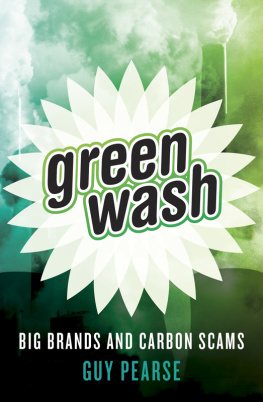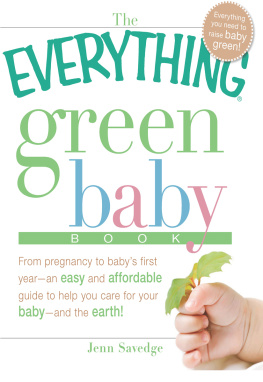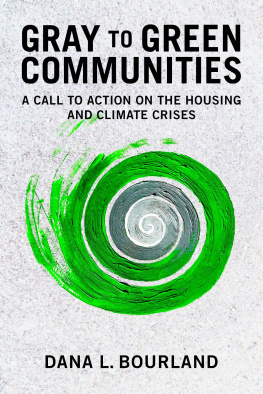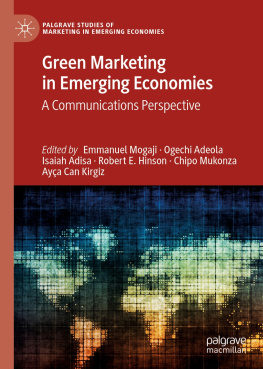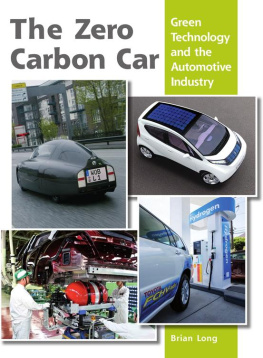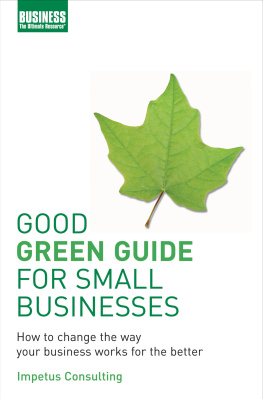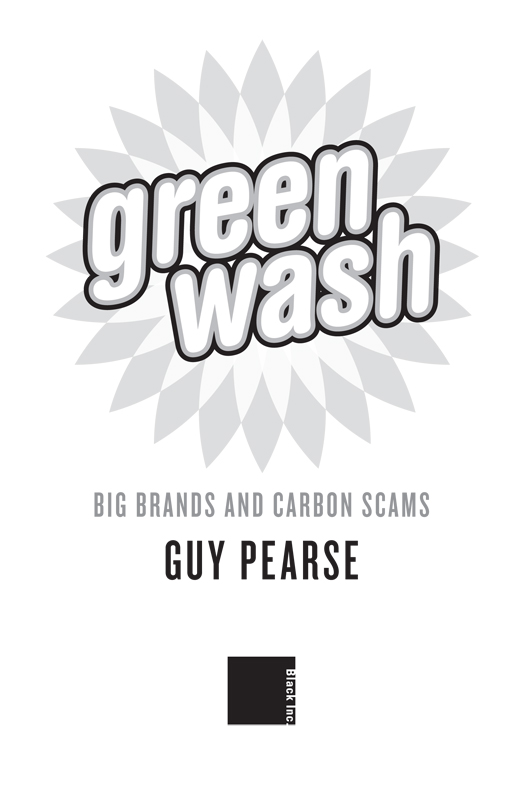For Wendy, Patrick and Harvey

Having spent most of my life trying to avoid advertising wherever possible, four years ago I decided to start collecting one particular type: that claiming certain products and the brands behind them are helping in the fight against climate change. But why? Why spend years immersed in green slogans, warm and fuzzy images of nature, and fine print?
In short, I wanted to discover whether the climate-friendly revolution being advertised is real. Many consumers believe that the best way to contribute to the fight against climate change is through their wallets. Businesses around the world have seized the opportunity to cater to green-minded consumers they recognise the value in being seen as more climate-friendly than the competition. Almost every major global brand has embarked on a campaign designed to persuade us that it is cutting its carbon footprint. Thus marketing, rather than politics, seems a more relevant window onto the issue of climate change for most people. We all know the brands, weve seen the advertisements, and many of us have made green purchases as a result of them. Many of us believe, or at least hope, that if enough of us choose similarly, it will have a big impact. Some of us like the idea of rewarding a company with our business for going green. But is the climate-friendly revolution really underway?
A great deal hinges on the answer for governments, investors, environmental organisations, advertising agencies, people trying to do their bit through their purchases and of course for the climate itself. As the world looks set to accommodate an extra 3 billion people this century, its a question we need answered. And yet it is rarely even asked the answer is generally assumed to be yes.
So, are the worlds biggest and greenest-looking brands actually reducing the carbon footprint of their products? Or is the proliferation of climate-friendly advertising mostly greenwash, a torrent of corporate spin that sounds impressive but conceals mostly business as usual? To find out the truth Ive watched over 3000 TV commercials and collected around 4000 online, billboard, newspaper and magazine ads. To investigate the claims made in the advertising Ive digested close to 750 company annual reports and sustainability reports. Immersing myself in this much corporate PR has felt as greasy as I imagine Morgan Spurlock felt after consuming McDonalds at every meal for a month for Supersize Me . At other times Ive felt like Bear Grylls must when he squeezes the drinking water of last resort from an elephant dropping forward progress means gritting ones teeth and pressing on. On the other hand, collecting this much material meant watching some very creative and funny ads, so there was a bit of fun involved too.
In Greenwash , Ill compare the climate-friendly campaigns and claims by the worlds biggest brands with what theyre actually doing and with the carbon footprint of what theyre selling. Whatever you spend your money on cars, coffee, flights, pets, sport or even sex youll be in for some surprises as climate-friendly marketing goes on trial. Some of the most respected reputations will be exposed as the least warranted, and some of the less well regarded will emerge as worthy of our praise. Nothing is sacred and no-one is safe: not the Toyota Prius, not the World Wildlife Fund, not Richard Branson, not Oprah, not even Earth Hour.
Well look beyond the carbon footprint of the individual products. After all, every ad for a product also advertises a brand. Well also look beyond the carbon footprint of a brands factories and corporate offices to consider all the emissions bound up in what it sells, since the emissions created to produce the raw materials and transport them to and from the factories are just as real. In most cases they are also many times greater than what is generated by the brands own operations. So, we cant really know whether the total carbon footprint is falling unless we factor in supply chain emissions and those generated when people use the product. If we ignore these, as many green brands want us to, 90 per cent of the carbon footprint of a brands products might well disappear into an emissions equivalent of the Bermuda Triangle.
There is of course a great deal more to being green as a company than dealing with greenhouse gas emissions alone. I dont for a moment seek to downplay the importance of other environmental challenges. Nor is the aim here to demonise big business or overlook the positive steps that many companies are making. I dont underestimate the challenge that companies face as they try to make large cuts in their carbon footprints, while remaining profitable and competitive. That said, big brands have an obligation to level with the public, both about the scale of the challenge they face and about the extent of their progress and ambition. If the overall carbon footprint of the products being sold by a company is still rising, and if the companys plans seem unlikely to change that, then its disingenuous for a brand to pretend that its climate-friendly.
The amount of corporate greenwash out there is vast. Think of this book as a walk along a beach strewn with the advertising industrys greenest flotsam and jetsam. This is just one of many beaches, though, so many greenwashing companies, brands, products and services are not covered here. Even so, well emerge with a clear answer on whether companies are really becoming climate-friendly or mostly greenwashing, and whether the revolution being advertised is real. Well also see past the seductive branding and spin to confront the uncomfortable truths that lie behind them. Consumers will come away from Greenwash better equipped to pick the truly climate-friendly businesses, and help others (not least our political leaders) to be less susceptible to greenwashers and their techniques. The way I see it, the more people who learn the tricks of the greenwashing trade, the less effective these tricks will be.

Stroke him, says the online HSBC ad. Go on. He wont bite. You move your cursor over the image of the polar bear. The virtual bear then rolls around as if being tickled by your intervention. Want to play a part in his future? Help us protect his world today by clicking again, says the ad, and sends you to a site with tips on what you can do to cut your carbon footprint. There are also links to show you that the bank is doing much more than its fair share to rein in climate change. But now the bear has gone; the ticklish fun is over. He has served his purpose, and the bank has you where it wants you.

